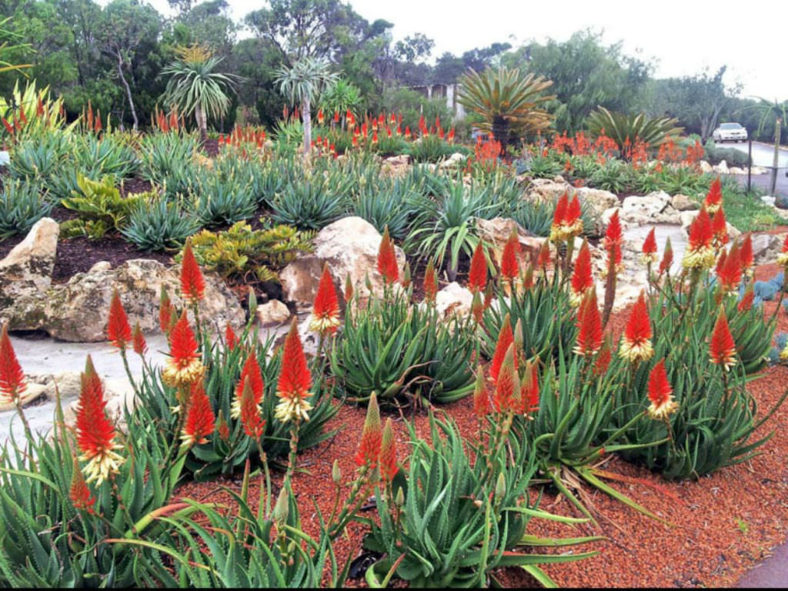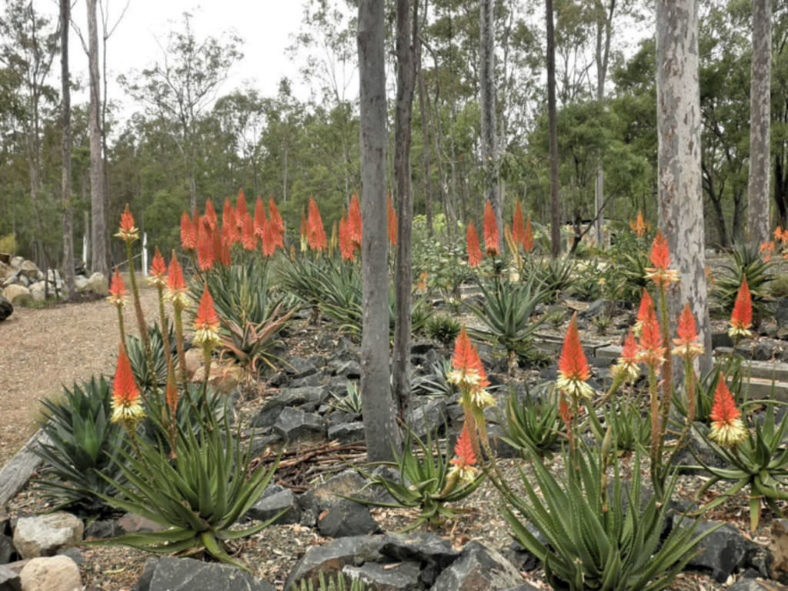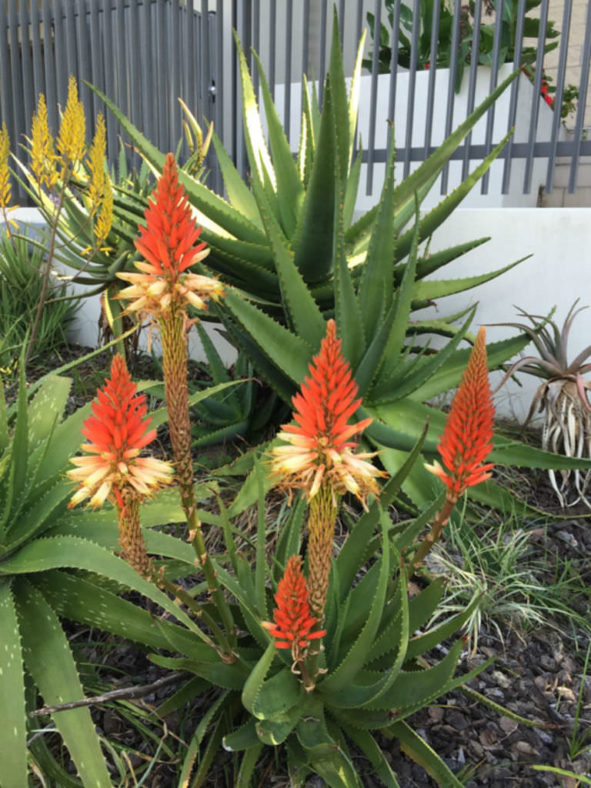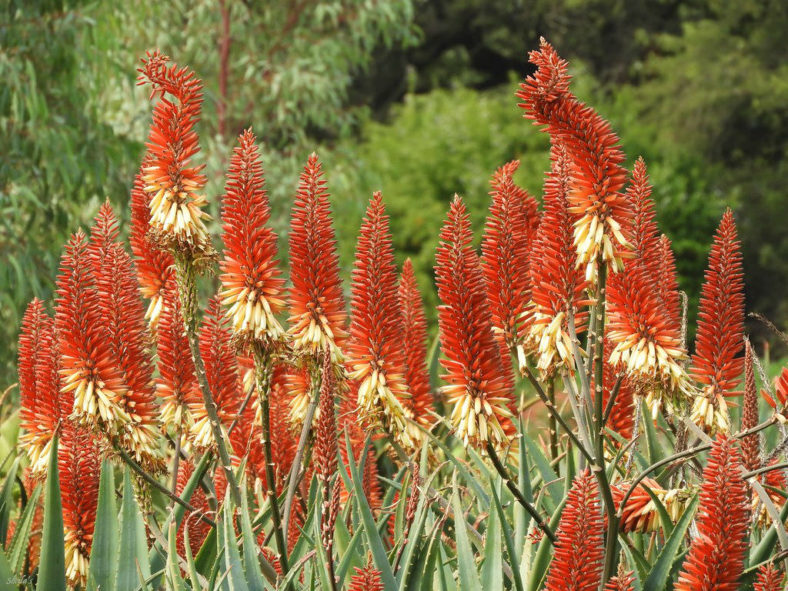Scientific Name
Aloe 'Venus
Scientific Classification
Family: Asphodelaceae
Subfamily: Asphodeloideae
Genus: Aloe
Origin
Aloe 'Venus' is an Aloe-Aloe Horticulture Pty original hybrid.
Description
Aloe 'Venus' is a stunning Aloe hybrid that produces large, beautiful red and white bicolored flowers that bloom one after another for a prolonged period from early fall through mid-winter. It can grow up to 2 feet (60 cm) tall. The plant has thin green leaves that conceal its flowering potential. It does not often produce stem shoots.

Hardiness
USDA hardiness zones 10a to 11b: from 30 °F (−1.1 °C) to 50 °F (+10 °C).
How to Grow and Care
Aloes are very forgiving plants. However, as with all succulents, Aloe must never be allowed to sit in stagnant water, and the plant should be carefully monitored for signs of overwatering.
These succulents are not particularly fast-growing and will only rarely need repotting. In spring, repot Aloes that are tipping over their pots or have ceased growing. A well-drained potting mix is essential. Use cactus or succulent mix. When repotting a larger plant, dividing the root ball carefully is possible. Some varieties of Aloe will send off offsets that can be potted independently.
Aloe plants need strong, bright light. They can withstand full summer sun once acclimated. In the winter, provide bright light. These plants prefer warmer temperatures of 70 to 80 °F (21 to 27 °C) but will survive down to 40 °F (4.5 °C). Feed with a fertilizer for cacti and other succulents in spring and summer only.
Learn more at How to Grow and Care for Aloe.
Links
- Back to genus Aloe
- Succupedia: Browse succulents by Scientific Name, Common Name, Genus, Family, USDA Hardiness Zone, Origin, or cacti by Genus
Photo Gallery
Click on a photo to see a larger version.



